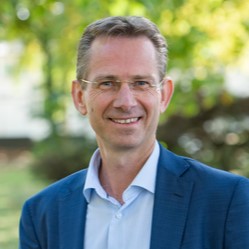Yara expands capacity for low-emission imports into Europe
By Julian Atchison on October 22, 2024
Increased import capacities and offtake volumes

Click to learn more about the new ammonia import terminal at Yara’s Brunsbüttel plant in Germany. Source: Yara.
Yara is expanding its capabilities for import of low-emission ammonia across Europe, starting with the recent opening of a new ammonia import terminal this month in Brunsbüttel, Germany. With the new terminal, Yara has the infrastructure to enable imports of up to three million tons of low-emission ammonia to Europe annually by 2030. The Baltic Sea port is the site of other planned ammonia import hubs and boasts Germany’s largest ammonia storage capacity, with Yara mooting upgrades there to increase import volumes.
To fulfill these new import capacities, Yara Clean Ammonia has signed a binding commercial agreement with ACME and a series of MoUs for low-emission ammonia offtake, including:
- 100,000 tons per year from ACME’s renewable project in Duqm, Oman
- 50% of phase one production from AM Green’s under-construction renewable plant in Kakinada, India
- And a heads of terms agreement with Scatec for renewable ammonia offtake from its project in Damietta on the Nile delta
Yara International will also offtake renewable fertiliser produced by ATOME in Paraguay, and sell it as part of its “Yara Climate Choice” product line. Yara currently has two supply deals inked for low-emission fertilisers in Europe: with PepsiCo and Lantmännen.
Decarbonization options for its remaining production facilities in Europe are being explored. At Herøya in Norway, Yara’s 24 MW electrolysis demonstration plant began producing renewable hydrogen feedstock this year, based on hydroelectric power. At Sluiskil in the Netherlands, Yara and Northern Lights are pursuing a CCS project that will begin sequestering production emissions in 2026. CCS options are also being explored for its plant in Ravenna, Italy.
Hear more from Yara Clean Ammonia’s CEO in New Orleans

Hear from Yara Clean Ammonia CEO Hans Olav Raen at our upcoming annual conference in New Orleans, USA.
Hans Olav Raen will join our annual conference in New Orleans to discuss developments in Europe. Hear from Hans and other key players on Tues 12 November in one of our high-level panel discussions, focused on the EU has a demand center for low-emission ammonia.